What is hawthorn and what does it look like?
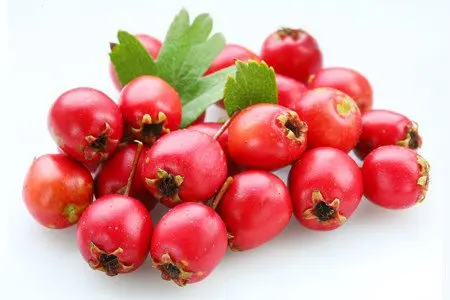
Hawthorn, depending on the variety, is a majestic tree or a rather lush bush. The crown of the plant is dense, shaped like a ball or an egg. Leaf blade with a serrated edge, deep green. During the flowering period, hawthorn is strewn with small white or pale pink flowers, united in brushes. Despite the presence of dimethylamine in hawthorn flowers, which has a characteristic fishy aroma, the trees are fragrant.
An unpretentious plant develops rapidly in a temperate climate. Currently, hawthorn is widely distributed in Eurasia, North America. High-yielding varieties are cultivated in the Russian Federation. During the harvest period, up to 50 kg are harvested from one blood-red Hawthorn or Daurian Hawthorn tree.
The first mention of hawthorn dates back to the times of Ancient Rome. The Chinese called it a symbol of love. After all, love is care, and hawthorn combines the external beauty of flowering, the benefits of fruits and concern for human health. For hundreds of years, hawthorn has been used to treat the cardiovascular system, nervous disorders, to protect the digestive system, and to take care of the beauty of hair and skin.
Hawthorn flowers and fruits are used as medicinal raw materials. They are harvested in dry weather and dried for several days. In industrial production, special drying cabinets are used. The fruits are harvested after full ripening, washed and dried in dryers at a temperature of about +70°C.
The hawthorn tree lives for over 300 years. During the whole period of life, it blooms profusely, gives a harvest, attracts bees, like a honey plant.
How does hawthorn grow?
Under natural conditions, hawthorn prefers temperate and subtropical climatic conditions. In some countries of Eurasia and North America, the cultivation of hawthorn has an industrial scale.
On the territory of Russia, hawthorn is distributed in the Middle lane, in the expanses of Siberia, the Far East and Transbaikalia, in the mountains of the Caucasus and Crimea. It is easy to find on forest edges and clearings, on river and lake shores, on mountain slopes and water meadows. Hawthorn loves clay, medium soils and loams, although it can be found on any other soil.
Gardeners consider hawthorn to be unpretentious plants. It perfectly tolerates dry summers and harsh winters, but loves high soil moisture. If you want to grow hawthorn in your garden, choose a sunny location and water and fertilize the plant regularly. In return, you will receive an unprecedented harvest of healing berries.
Hawthorn is a bright, tall bush that will become the main decoration of the garden plot. It looks great in landscape park design as hedges. The majestic hawthorn serves as a stock in the cultivation of dwarf fruit trees, such as pears, apple trees.
Health benefits of hawthorn

Flowers and berries of hawthorn have healing properties. For the preparation of some medicines, young shoots are used. Leaves, stems and bark of the plant are of high phytotherapeutic value. From fresh berries, the hostesses prepare jams, jams, wines, confiture, jam. Dry fruits are used for making teas, medicinal preparations.
Hawthorn has a positive effect on almost all internal organs. Medical research confirms a number of its medicinal effects:
Lowering cholesterol.
Cardiotonic.
Reduced blood pressure.
Antispasmodic.
Astringent.
Venotonic.
Calming.
Cleaning.
Stimulating immunity.
Anti-inflammatory.
Antibacterial and antiviral.
Diuretic.
Antioxidant.
Replenishment of vitamin deficiency.
Chemical composition of hawthorn
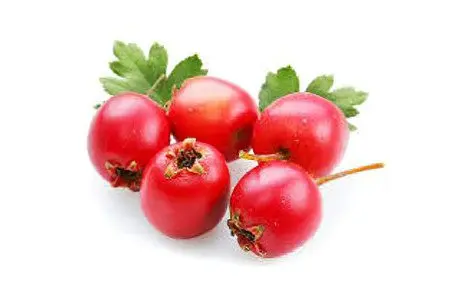
Medicinal raw materials are hawthorn inflorescences with several leaves. The main active ingredients in the inflorescences are flavonoids (vitexin and its glycosides, rutoside, hyperoside, kaempferol – responsible for the action of the vascular smooth muscle relaxant) and procyanidins (gently lowering blood pressure).
The inflorescence includes phenolic acids, triterpene acids, nitrogenous compounds, tannins, essential oil, β-sitosterol and esculin.
7 healing properties of hawthorn for the heart and blood vessels
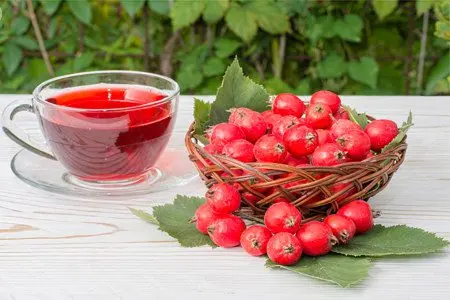
Both the flowers and fruits of hawthorn are well known in folk herbal medicine as a heart tonic, and modern research has supported its use. The flowers and fruits are hypotensive and also act as a direct and mild cardiac tonic. Let’s take a closer look at some properties.
1 Antioxidant action
The polyphenols found in hawthorn fruit are antioxidant compounds. Their activity is several times higher than the antioxidant properties of other plant polyphenols.
Antioxidant action of hawthorn polyphenols preserves youthfulness of the skin and prevents the development of serious diseases [1], [2]
Heart and blood vessels.
Some types of oncological tumors.
Diabetes mellitus type II.
infectious diseases.
Bronchial asthma.
Research on hawthorn fruit is ongoing to confirm its positive efficacy in the treatment of other physical disorders.
2 Anti-inflammatory effect
Hawthorn suppresses the symptoms of inflammation, which contributes to a faster recovery. Chronic inflammation accompanies asthma, type II diabetes, and certain forms of cancer.
Mice Experiment Shows Hawthorn Fruit Extract Suppresses Inflammation in Liver Disease [3].
In asthmatic mice, hawthorn extract reduced inflammatory responses. Simultaneously with this effect, a decrease in asthmatic manifestations is observed. [4].
3 Digestion Improvement
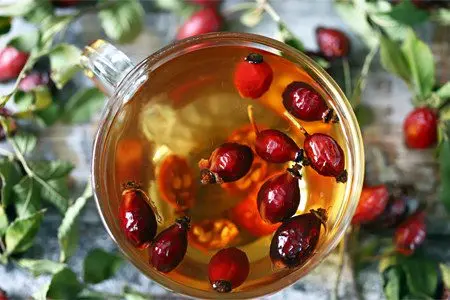
According to folk recipes, hawthorn is a good remedy for normalizing digestion, treating gastric disorders and relieving stomach pain. Fiber of berries is endowed with perbiotic properties. It stimulates digestion and relieves constipation.
A study in people with slow digestion found that every gram of hawthorn fiber consumed shortened the time between bowel movements by 30 minutes. [5].
An experiment with rats confirmed the opinion that hawthorn extract stimulates and accelerates the digestion of the food bolus in the gastrointestinal tract. This greatly contributes to the relief of symptoms of indigestion.
Observations on rats with stomach ulcers have shown that hawthorn extract protects the gastric mucosa. It can be argued that the action of phytocompounds has antiulcer properties [6].
4 Sedative effect
Hawthorn-based products have a delicate calming effect, eliminate anxiety [7].
Medical observation of 264 participants showed that the combination of hawthorn with magnesium preparations and California poppy flower significantly reduced anxiety, which was different from the data of the placebo group. The role of hawthorn in this combination is established [8].
Unlike traditional pharmacological preparations, hawthorn has fewer side effects. In this regard, it is considered as an alternative treatment for nervous disorders, anxiety, and depression.
5 Reduces pressure
In order to lower blood pressure, hawthorn has been used by Chinese doctors for more than one hundred years. Regular consumption of thorn bush berries is the main condition for stabilizing high blood pressure. Hawthorn has a vasodilating effect. Relaxation of the vascular wall helps to lower blood pressure.
To study the hypotensive effect of hawthorn, a study was conducted involving 36 people. For 10 weeks, subjects received 500 mg of hawthorn extract daily. The results did not show a pronounced decrease in blood pressure. There was only a slight decrease in diastolic indicators (lower pressure) [9].
In another experiment that lasted 16 weeks, 79 patients with type II diabetes were followed up. In the control group, each of the participants received 1200 mg of the extract. The results of the sample showed an improvement in blood pressure indicators compared with the placebo group [10].
6 Lowers cholesterol
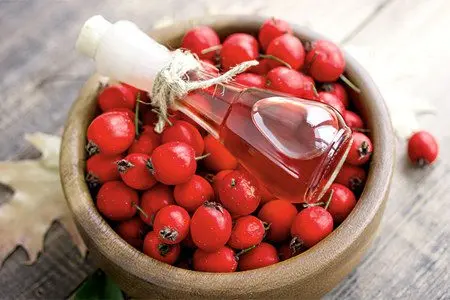
According to some medical data, hawthorn is able to influence the lipid profile of the body. The main components of the lipid formula are cholesterol and triglycerides, which are present in the blood of every person. In a state of physiological norm, they do not pose a threat, but participate in the synthesis of hormones, the transfer of valuable substances through the internal systems of the body.
In an experiment with mice, it was found that high dosages of hawthorn extract help reduce total cholesterol and “bad” cholesterol (LDL). Compared with animals in the placebo group, the control sample showed a decrease in triglycerides from 28 to 47% [11].
In another study, mice fed high doses of cholesterol were given hawthorn extract and simvastatin, a cholesterol-lowering drug. It turned out that the level of lowering total cholesterol and triglycerides was almost the same in both experimental groups. In addition, in animals treated with hawthorn extract, there was a decrease in “bad” cholesterol. [12].
7 Helps with heart failure
The most common use of hawthorn is in the treatment of heart failure. A total of 14 medical studies included more than 850 subjects with symptoms of heart failure. The results showed that the use of hawthorn along with traditional medicines improves cardiac activity, increases physical endurance. Participants noted a reduction in fatigue, shortness of breath [13].
Within 24 months, 952 people with a history of heart failure were examined. It turned out that in the group that received hawthorn extract, participants noted less fatigue, rare bouts of shortness of breath and tachycardia. No similar results were observed in the placebo group. Control participants who took hawthorn needed fewer drugs prescribed for heart failure [14].
The largest study was conducted with the participation of 2600 patients with symptoms of heart failure. It showed that the systematic use of hawthorn berries reduces the likelihood of sudden death from a heart attack. [15].
Hawthorn is recommended for patients with heart failure as part of complex therapy. It has a pronounced benefit for heart health and practically does not cause negative reactions.
[Video] The benefits and harms of hawthorn:
Tea with hawthorn flowers
Hawthorn tea has invigorating properties, helps to calm the nervous system. To prepare the drink, you can use dried flowers and hawthorn leaves, which are poured with a glass of boiling water.
Tea is prepared from hawthorn fruits as follows: [21]
Dried hawthorn berries – 100 grams.
Pour the fruits into a thermos.
Fill with boiling water.
Insist during the night.
The entire volume of tea is drunk during the day in small portions.
[Video] Hawthorn juice for the winter:










Ju faliminderit per gjitha këto informacione e neve na mbrtet te perdoremi per nji shendet me te mir